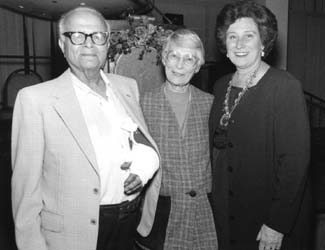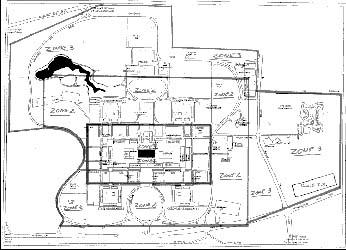Largest Alumni Gift Results in First-Ever Building Naming

By Carol Olechowski
A married couple who met at Albany as undergraduates more than 60 years ago has presented the University with its largest alumni gift to date — one that will name the first building at the East Campus.
With their $1 million contribution, Class of 1938 alumni Edward S. and Frances Gildea George have bestowed their names on the 102,000-square-foot office building occupied since last November by the University’s School of Public Health. Other tenants include Health Research Incorporated (HRI) and a Medicaid project funded by the New York State Attorney General’s Office.
Acknowledging the Georges’ generosity on behalf of the University, President Hitchcock pointed out that the naming marks the first time in Albany’s 153-year history that a University building has been named for donors.
“We are all so very grateful for this gift,” said the President. “The naming of the Edward S. and Frances Gildea George Education Center is a most fitting tribute to two wonderful alumni who have supported Albany so generously for so many years.”
The two-story structure is a focal point of the East Campus, which is located in Rensselaer County at the site of the former Sterling Winthrop pharmaceuticals complex. It houses seven classrooms, four computer rooms, a library, a video conferencing room, faculty offices, an auditorium, and workspaces for staff and students. All told, the Edward S. and Frances Gildea George Education Center contains 60,000 square feet of office space, 12,000 square feet of conference facilities, and 15,000 feet of dry storage space.
Edward George, who also earned a doctorate at Columbia University, explained that he and his wife decided to name the center “partly for sentimental reasons — because we met at Albany — and partly because of our interests in science, health, and public service.” Now retired from the U.S. Postal Service, George previously taught high school mathematics and science.
Added Frances George, a New York State Department of Social Services retiree: “We enjoy the relationship we have with Albany, and we appreciate the education we received there. My husband and I felt our gift would tangibly express both our gratitude and our support for the University.” She earned a master’s degree from Albany as well, in 1942.
The University recognized the Georges in 1992 with the naming of the Edward S. and Frances Gildea George Lecture Center (LC 18), a 500-seat amphitheater-style learning facility located on the uptown campus.
Formal announcement of the Georges’ most recent gift will be made at a press conference scheduled for 10:30 a.m. on Thursday, Nov. 6, at the East Campus. A formal ceremony to dedicate the Edward S. and Frances Gildea George Education Center will be held next spring.

 By Vinny Reda
By Vinny Reda